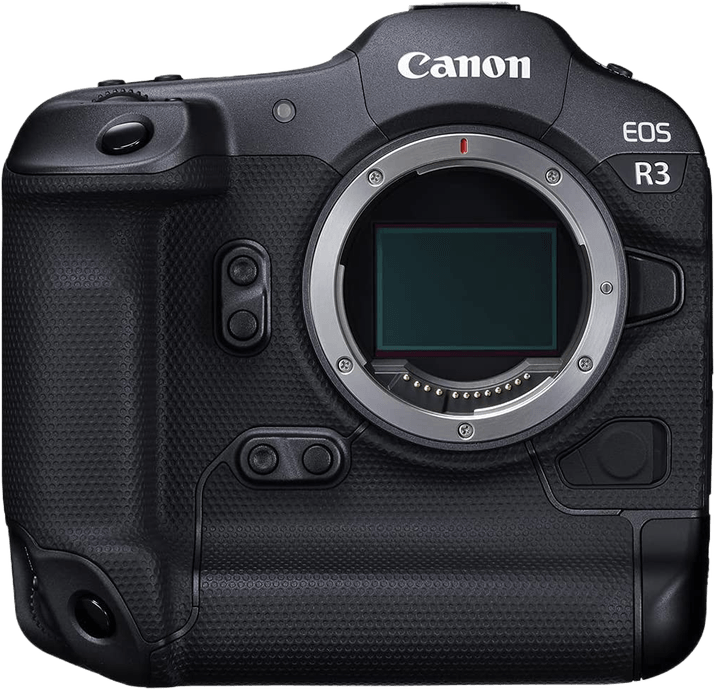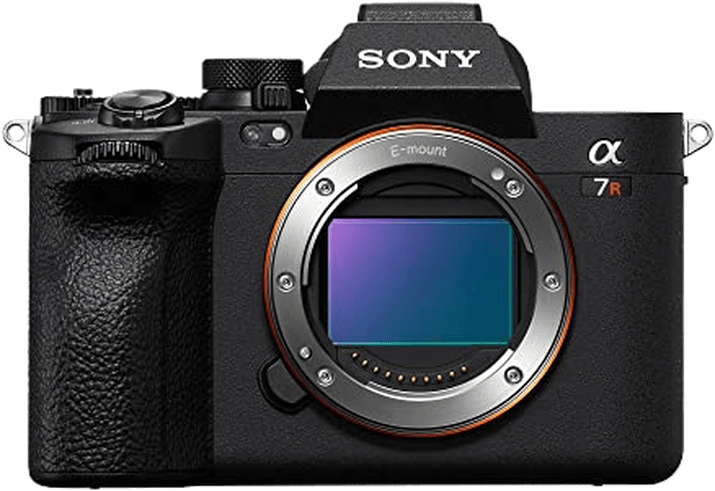Canon EOS R3 vs Sony a7R V Comparison
Canon EOS R3

Sony a7R V

The Sony a7R V narrowly outperforms the Canon EOS R3 with a score of 85/100 compared to the R3’s 84/100. Both cameras are mirrorless and were released within a year of each other, with the R3 launching in 2021 and the a7R V in 2022. They share similarities in their camera types and release years.
The Sony a7R V has the advantage of a lower launch price at $3999, compared to the R3’s $5999. Additionally, the a7R V is lighter and more compact, weighing 723g and measuring 131 x 97 x 82mm, making it easier to handle and transport.
On the other hand, the Canon EOS R3 is slightly heavier and larger, weighing 1015g and measuring 150 x 143 x 87mm. Despite these differences, the R3 still holds its own with a commendable score of 84/100.
Taking all factors into account, the Sony a7R V emerges as the winner due to its lower price and more compact design. However, the Canon EOS R3 remains a strong contender with its respectable score and performance.
Canon EOS R3 vs Sony a7R V Overview and Optics
The Sony a7R V narrowly wins in the optics comparison with a score of 85/100, while the Canon EOS R3 scores 84/100. Both cameras share several common specifications, such as a CMOS sensor, full-frame sensor size, and image stabilization. They also have their respective lens mounts: Canon RF for the EOS R3 and Sony FE for the a7R V.
The Sony a7R V outperforms the Canon EOS R3 in terms of megapixels, boasting 61 compared to the R3’s 24. This higher megapixel count provides the a7R V with greater resolution, allowing for more detailed images and better performance in large-format printing. However, the Canon EOS R3 has a faster shooting speed of 30 frames per second, compared to the Sony a7R V’s 10 frames per second. This makes the EOS R3 more suitable for action photography and capturing fast-moving subjects.
Despite the Sony a7R V having a lower DXOMARK sensor score of 94 compared to the Canon EOS R3’s 96, it still wins in the optics comparison. This is because the difference in sensor scores is minimal and the a7R V’s higher megapixel count carries more weight in this comparison.
Both cameras excel in different areas, with the Sony a7R V offering superior resolution and the Canon EOS R3 providing faster shooting speeds. Users should consider their specific photography needs when choosing between these two models. While the Sony a7R V is better suited for photographers requiring high-resolution images, the Canon EOS R3 is the better choice for those who need to capture fast-moving subjects.
Canon EOS R3 vs Sony a7R V Video Performance
The Sony a7R V emerges as the winner in the video capabilities comparison with a score of 100/100, while the Canon EOS R3 scores 96/100. Both cameras share some common video specifications, including a maximum video frame rate of 120fps and built-in time-lapse functionality.
The Sony a7R V surpasses the Canon EOS R3 in terms of video resolution and dimensions. The a7R V can record 8K videos with dimensions of 7680 x 4320, providing higher detail and clarity compared to the EOS R3’s 6K video resolution and dimensions of 6000 x 3164. This difference allows the Sony a7R V to produce superior video quality, making it the preferred choice for videographers seeking the highest resolution possible.
Although the Canon EOS R3 scores lower than the Sony a7R V, it still offers impressive video capabilities. Its 6K video resolution and 120fps frame rate ensure high-quality video recordings suitable for various professional applications. However, the EOS R3 does not surpass the Sony a7R V in any specific video aspect.
To sum up, the Sony a7R V outperforms the Canon EOS R3 in video capabilities, primarily due to its higher video resolution and dimensions. While the EOS R3 offers commendable video features, it does not excel beyond the Sony a7R V. Videographers seeking the best video quality should opt for the Sony a7R V, while those content with slightly lower resolution may still find the Canon EOS R3 suitable for their needs.
Canon EOS R3 vs Sony a7R V Features and Benefits
The Canon EOS R3 and Sony a7R V both have a feature score of 87/100, indicating that these two cameras are quite evenly matched in terms of their features. They share several specifications, including a 3.2-inch touchscreen, flip screen, Wi-Fi, and Bluetooth connectivity. However, there are some differences that set them apart.
The Canon EOS R3 is superior in screen resolution, offering 4,150,000 dots compared to the Sony a7R V’s 2,100,000 dots. This higher resolution provides a clearer and more detailed display, which is useful for reviewing images and navigating the camera’s settings. Additionally, the Canon EOS R3 includes GPS functionality, allowing photographers to geotag their images for easy organization and location-based searches.
On the other hand, the Sony a7R V does not have GPS, making it less versatile for photographers who value geotagging capabilities. Despite this drawback, the Sony a7R V still offers the same core features as the Canon EOS R3, making it a strong competitor in the market.
Given the similarities and differences between the Canon EOS R3 and Sony a7R V, it’s clear that both cameras are capable and well-equipped. The Canon EOS R3’s higher screen resolution and GPS functionality give it an edge over the Sony a7R V. However, the Sony a7R V remains a viable option for photographers who do not require GPS and are satisfied with a lower screen resolution. Ultimately, the choice between these two cameras depends on individual preferences and specific needs.
Canon EOS R3 vs Sony a7R V Storage and Battery
The Canon EOS R3 outperforms the Sony a7R V in storage and battery, scoring 81/100 compared to the latter’s 73/100. Both cameras share similarities, such as having two memory card slots and accepting SD/SDHC/SDXC cards. They also both support USB charging.
However, the Canon EOS R3 has an edge with its longer battery life, capable of capturing 760 shots per charge, while the Sony a7R V can manage 530 shots. Additionally, the EOS R3 uses the LP-E19 battery and is compatible with CFexpress Type B (UHS-II) cards, offering faster read and write speeds than the a7R V’s NP-FZ100 battery and CFexpress Type A cards.
In terms of storage and battery performance, the Canon EOS R3 proves to be the stronger contender, providing more shots per charge and faster memory card compatibility. On the other hand, the Sony a7R V still offers decent battery life and storage options, making it a suitable choice for certain users. Ultimately, the Canon EOS R3’s superior performance in these areas makes it the better option for photographers who prioritize endurance and speed.
Canon EOS R3 vs Sony a7R V – Our Verdict
Are you still undecided about which camera is right for you? Have a look at these popular comparisons that feature the Canon EOS R3 or the Sony a7R V:

